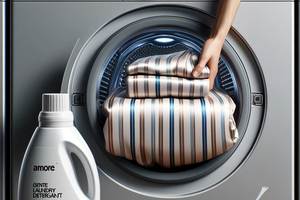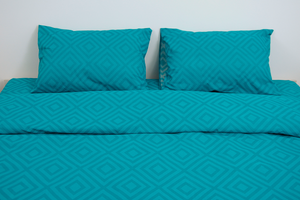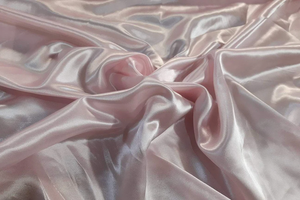It is known that colored sets are easier to wash than white ones. Despite this, the desire to buy household items in a fashionable color does not disappear, because they make you feel comfortable. But sets made of white fabric need to be washed frequently, which is why they gradually lose their appearance.
How to preserve the whiteness of sheets and pillowcases? How to make your favorite set always impress with its snow-white charm? Skillful housewives keep the secrets of their grandmothers, who could whiten any dirt from a white surface with home remedies. But what if such tips are forgotten? What should you do to make your laundry look like snow? This is what we will discuss below.
What happened to the snow-white bedding
Any sample from constant washing loses its snow-whiteness and acquires a yellowish background. There are several reasons for this process:
Sometimes the washing instructions are forgotten, and in a hurry, dark products are not separated from lighter ones.
White sets get dirty faster, so you have to change them once a week. The original color fades from frequent washing.
Water is always different in chemical composition. If it contains impurities of potassium and magnesium salts, it is almost not suitable for washing. Microparticles of impurities interact. Compounds are formed that, penetrating the structure of the fabric, change its shade.
Improper care can be the cause of the problem. If things lie in a damp, unventilated closet for a long time, their shine gradually fades.
Powders containing a high percentage of alkalis will also affect the result.
If you rinse the product poorly, microparticles remain in the fiber structure, which "destroy" the whiteness.
After analyzing the explanations, we can identify those that contributed to the discoloration of the bedding.
Chemical bleaching agents
How to return the original shade to bedding? The easiest way is to use chemicals. Today, many formulations are available that can eliminate the yellow tint and gray of the sheets.
It should be noted that household chemicals can be of different types:
Powders containing optical whitening components provide a visual perception of the laundry, but do not penetrate the structure of the fabrics. The yellowness may return after a while.
Oxygen bleaches do not contain chlorine. The "dirty work" is done by active oxygen, which penetrates into the microfibers of the fabric - the effect is impressive, but housewives are scared off by the high price of oxygen bleach.
Chlorine products are a budget option for housewives. There is no need to complain about the quality of the powder: stains and yellowness have disappeared, but chlorine quickly thins and damages tissue structures. Colored clothes should not be washed with chlorine-containing powders. Chlorine vapors are toxic and can cause irritation of the skin of the hands and respiratory tract spasms.
The use of a laundry solution gives a strong result. You should not use the solution often: it contains sodium hypochlorite. The component penetrates the material, deforms microcells, which makes the fabric porous, and the bedding does not last long.
If the hostess has tried several chemical laundry detergents, but the desired result has not been achieved, then you should turn to home bleaching methods.
Home "helpers" for whitening
Chemicals produced by the chemical industry are convenient and familiar, but you shouldn't use chemicals all the time, as they reduce the service life of fabrics. You can prepare a composition yourself, the whitening effect of which will be high, especially since such a product will not affect the appearance of the textile product.
Useful "home helpers" for bleaching include:
1. Baking soda is often used for household purposes, but few people know that it can be used for laundry. If you take a mixture of soda and laundry detergent, the result will exceed all expectations. The clothes will be snow-white. Moreover, unlike "chemistry," it is not capable of causing allergic irritations. It can be used to whiten a child's bed. If the laundry is stale, it should be immersed for several hours in a warm solution of baking soda and ammonia. If the fabric is yellow, you can simply pour baking soda, then add vinegar and wash. The solution will remove the gray color and return the duvet cover to white.
2. A combination of hydrogen peroxide and ammonia works wonders. Soak yellowed items in a solution of ammonia: add a little peroxide to a small amount of water. If you mix peroxide with water in the same ratio, you will get a composition for removing grease stains and oil. Another solution for soaking: 3 liters of water, 1 tbsp of ammonia, 2 tbsp of hydrogen peroxide.
3. When there was no such variety of industrial products, a solution of ordinary dark soap and warm water was used. To improve the quality of washing, a few grains of potassium permanganate were added to the composition. The soaked textiles were left overnight and then washed in a machine.
4. There is another proven method - boiling. It is effective, but requires a long time and a lot of preparation. You need to purchase a large enameled or galvanized container and a piece of white cloth. The next step is to prepare a solution of laundry soap and ammonia. Once the fabric is in the boil, you can put things in, spreading them out well, pouring soapy water over them. It takes a lot of time to boil, and the laundry needs to be turned over at regular intervals. The method is time-consuming, but the previous state will return.
The above products are effective for bleaching, but it should be borne in mind that the first two are best used to remove small yellow spots, the latter - to completely bleach the most washed bedding and remove yellowness on it.
About preserving the whiteness of bedding
When buying bedding, any housewife wants it to shine with whiteness for a long time. There are a few little tricks to help keep the product looking snow-white:
First of all, when buying a detergent, you need to pay attention to what fabrics it is intended for. For white bedding, there are powders that contain softening elements and cleaners that remove gray and yellow.
White bedding is washed in completely clean water separately from colored bedding, even if the latter does not fade.
Discoloration can also be caused by the fact that used linen stays in the basket for some time together with colored sets. This "neighborhood" causes the laundry to lose its color.
Absolutely dry textiles should be placed on the shelves in the closet, which should be periodically ventilated. It would be good to apply the old method: to shift household items with pieces of soap, and there will be no unpleasant odors.
The sets may turn yellow if stored in a room with high humidity.
For white, it is better to use soaking in warm water with hydrogen peroxide or citric acid. For soaking, you need to take a plastic container. Any scratches on stainless steel utensils can ruin the bedding.
If the bed has turned gray, there are many ways to remove dirt, making the linen extremely clean.
White bedding is always fashionable and has a calming effect, but to keep it shining with a snowy hue, you need to follow the instructions for caring for it


















